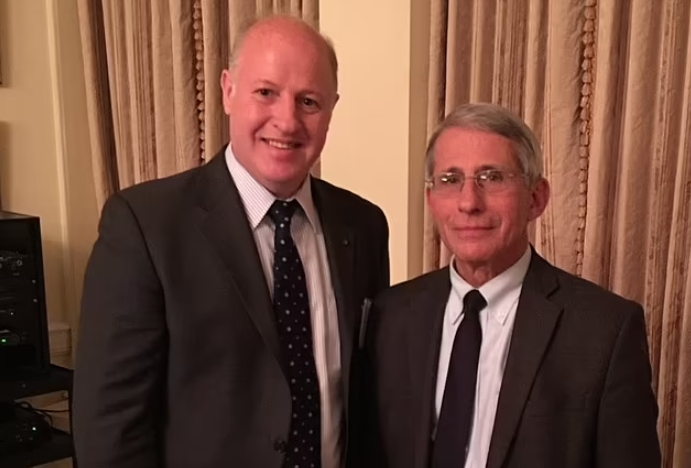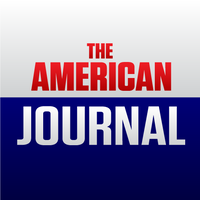🚨 The HHS COVID Vaccine Heist: Does It Rise to the Level of Conspiracy?
"Was protecting the NIH’s royalty payments the HHS' end game all along? I predict vaccine makers and the HHS will find a way to continue the royalty gravy train at our expense." — Ray L. Flores II, Esq.
⬇️
https://childrenshealthdefense.org/defender/hhs-nih-covid-vaccine-heist/?utm_source=sovren&utm_medium=social&utm_campaign=defender&utm_id=20240416
Circles
Posts
James Corbett Breaks The Spell of the Global Conspiracy
https://corbettreport.substack.com/p/james-corbett-breaks-the-spell-of
15 government agencies knew about the #DEFUSE project, but tried to coverup coronavirus #gain-of-function research
https://newstarget.com/2024-04-11-fox-news-admits-to-covid-origins-conspiracy.html

Back in 2018, multiple agencies of the U.S. federal government had intel that the Wuhan Institute of Virology (WIV) was modifying and enhancing coronavirus strains to create pathogens of pandemic potential. This intel is known as the DEFUSE project, and several high-level officials at the Department of Defense knew that these nefarious projects were taking […]
www.newstarget.com
Videos
The Alex Jones Show 2.0: Episode 19 - Alex Jones Deep Dive Into The Key To 9/11: The WTC Building 7 Controlled Demolition Conspiracy
Watch the full show: https://mugclub.rumble.com/post/5335486/the-alex-jones-show-2-0-episode-19-alex-jones-deep-dive-into-the-key-to-9-11-the-wtc-building-7 #JonesCrowder #MugClub
To some he is considered a modern-day Nostradamus, to others he is considered a provocateur of hate and conspiracy theories. Whether you like him or not, his predictions have been more right than wrong, and he has been punished greatly for them. On this edition of 360 View, Scottie Nell Hughes is going to have an uncensored conversation with the most censored man alive, Alex Jones.
Alex Jones Confronts Bohemian Grove Member David Gergen!
?Weaving Spiders Come Not Here! ??
?WATCH: ☠The Order Of Death☠ UNCENSORED on #Rumble: https://rumble.com/vf5xzj-the-order-of-death.html
> > #SupportInfowars: https://infowarsstore.com
Circles
Videos
The Alex Jones Show 2.0: Episode 19 - Alex Jones Deep Dive Into The Key To 9/11: The WTC Building 7 Controlled Demolition Conspiracy
Watch the full show: https://mugclub.rumble.com/post/5335486/the-alex-jones-show-2-0-episode-19-alex-jones-deep-dive-into-the-key-to-9-11-the-wtc-building-7 #JonesCrowder #MugClub
To some he is considered a modern-day Nostradamus, to others he is considered a provocateur of hate and conspiracy theories. Whether you like him or not, his predictions have been more right than wrong, and he has been punished greatly for them. On this edition of 360 View, Scottie Nell Hughes is going to have an uncensored conversation with the most censored man alive, Alex Jones.
Alex Jones Confronts Bohemian Grove Member David Gergen!
?Weaving Spiders Come Not Here! ??
?WATCH: ☠The Order Of Death☠ UNCENSORED on #Rumble: https://rumble.com/vf5xzj-the-order-of-death.html
> > #SupportInfowars: https://infowarsstore.com
Criminals HATE him! One simple trick eliminates 99% of crimes.
#conservative #conspiracy #bukele #nayibbukele #crime #elsalvador #elsalvador??
> > Support: https://www.infowarsstore.com/
Join Liam Sturgess has he explores the ironically-named "Excelsior Pass", and the alarming realities revealed by the companies behind it.
Show notes: https://liamsturgess.substack.com/p/in-the-name-of-excelsior
---
Find me at https://www.liamsturgess.com/
Join my Locals community for supporters-only content: https://liamsturgess.locals.com/
Subscribe to Microjourneys on Substack: https://liamsturgess.substack.com/
Buy Me a Coffee: https://www.buymeacoffee.com/liamsturgess
Follow me on all my platforms:
Rumble: https://rumble.com/c/liamsturgess
Bandcamp: https://www.liamsturgess.bandcamp.com/
Odysee: https://odysee.com/@LiamSturgess:1
Sovren: https://sovren.media/u/liamsturgess/
BitChute: https://www.bitchute.com/channel/bs1rJ76ek0Vp/
Brighteon: https://www.brighteon.com/channels/liamsturgess
YouTube: https://www.youtube.com/@LiamSturgess
Twitter: https://www.twitter.com/TheLiamSturgess/
Posts
🚨 The HHS COVID Vaccine Heist: Does It Rise to the Level of Conspiracy?
"Was protecting the NIH’s royalty payments the HHS' end game all along? I predict vaccine makers and the HHS will find a way to continue the royalty gravy train at our expense." — Ray L. Flores II, Esq.
⬇️
https://childrenshealthdefense.org/defender/hhs-nih-covid-vaccine-heist/?utm_source=sovren&utm_medium=social&utm_campaign=defender&utm_id=20240416
James Corbett Breaks The Spell of the Global Conspiracy
https://corbettreport.substack.com/p/james-corbett-breaks-the-spell-of
15 government agencies knew about the #DEFUSE project, but tried to coverup coronavirus #gain-of-function research
https://newstarget.com/2024-04-11-fox-news-admits-to-covid-origins-conspiracy.html

Back in 2018, multiple agencies of the U.S. federal government had intel that the Wuhan Institute of Virology (WIV) was modifying and enhancing coronavirus strains to create pathogens of pandemic potential. This intel is known as the DEFUSE project, and several high-level officials at the Department of Defense knew that these nefarious projects were taking […]
www.newstarget.com
15 government agencies knew about the #DEFUSE project, but tried to coverup coronavirus #gain-of-function research
https://www.naturalnews.com/2024-04-11-fox-news-admits-to-covid-origins-conspiracy.html

Back in 2018, multiple agencies of the U.S. federal government had intel that the Wuhan Institute of Virology (WIV) was modifying and enhancing coronavirus strains to create pathogens of pandemic potential. This intel is known as the DEFUSE project, and several high-level officials at the Department of Defense knew that these nefarious projects were taking […]
www.naturalnews.com
Eclipse, April 8, Mega Montage… What The Experts (and Prophets) are Saying! - Conspiracy Conversations (EP #35)
https://www.brighteon.com/88157a16-187f-4952-a9e0-78b308f98302

Watch every Saturday at 2:00 pm CST for a new edition of Conspiracy Conversations as David and a guest engage in a deep dive discussion on well-known conspiracies and mysteries.TO WATCH ALL CONSPIRACY CONVERSATIONS -www.conspiracyconversations.com TO WATCH ALL FLYOVER CONTENT: www.flyover.live Troy Brewer9:28 in Luke 21 - 28:08 out Stand up and be the body of King Jesushttps://youtu.be/1py3pXv8KS4?si=Kyq93SaA8MNcRvWU Steve Cioccolantihttps://rumble.com/v4hs5yu-the-flyover-conservatives-show.html Clay ClarkWEBSITE: www.timetofreeamerica.com PODCAST: www.thrivetimeshow.com To Schedule A Time To Talk To Dr. Dr. Kirk Elliott Go To▶ https://flyovergold.com Or Call 720-605-3900For Tickets to a ReAwaken America Event - text the word FLYOVER to 918-851-0102Julie Green and Larry Ballard:https://rumble.com/v4nfef3-live-with-julie-and-larry-ballard.html Lance Wallnau: March 28, 20242:08 - 14:1122:10 - 23:3224:01 - 31:21https://www.facebook.com/share/v/CDFoaJsvKGTViUud/?mibextid=xCWQen -------------------------------------------𝗦𝗣𝗢𝗡𝗦𝗢𝗥𝗦 𝗙𝗢𝗥 𝗧𝗢𝗗𝗔𝗬’𝗦 𝗩𝗜𝗗𝗘𝗢► Kirk Elliott PHD - FREE consultation on wealth conservation http://FlyoverGold.com ► My Pillow - save up to 80% off - https://MyPillow.com/Flyover ► Z-Stack - enjoy 5% off - https://flyoverhealth.com ► Redemption Shield - use promo code FLYOVER for 10% off - www.redemptionshield.com ► Prepper Beef - use promo code FLYOVER for 20% offContent Managed by ContentSafe.coCSID: a56df293a81d93fd
www.brighteon.com



















